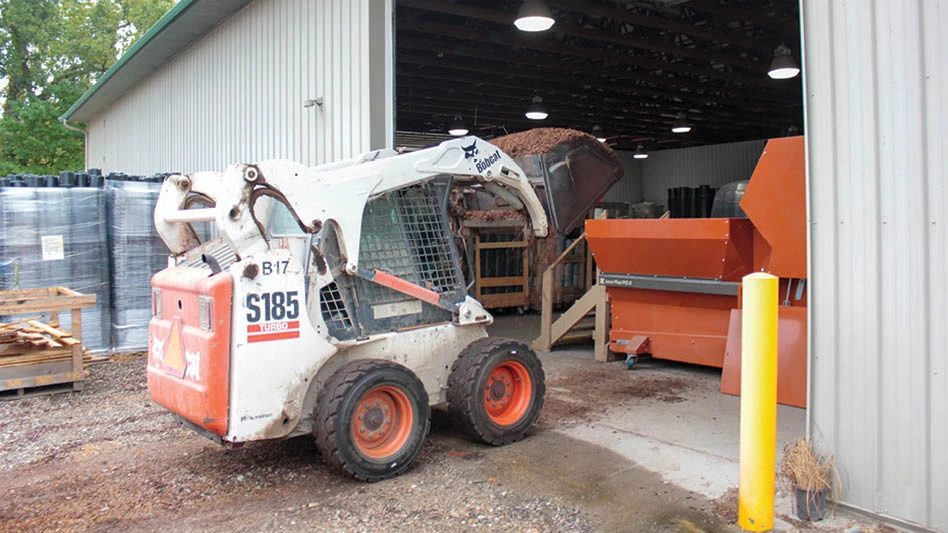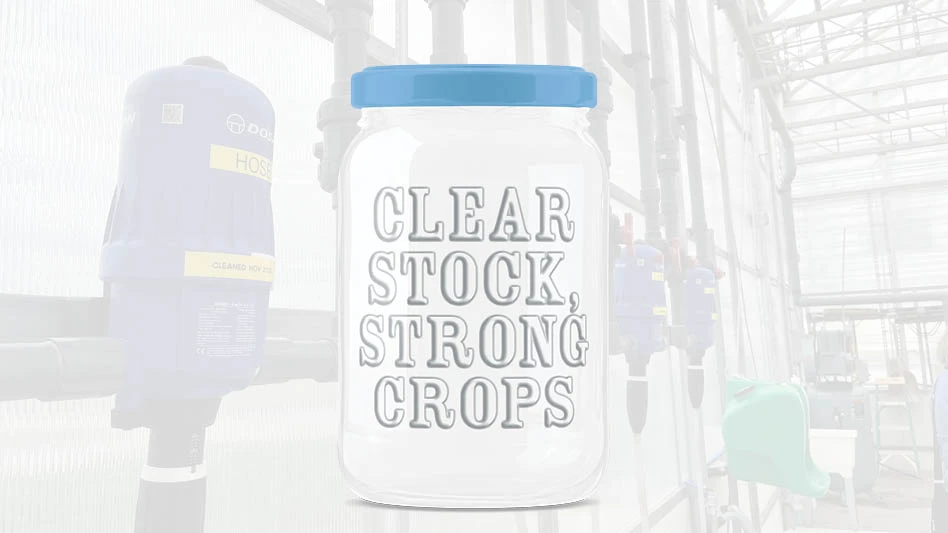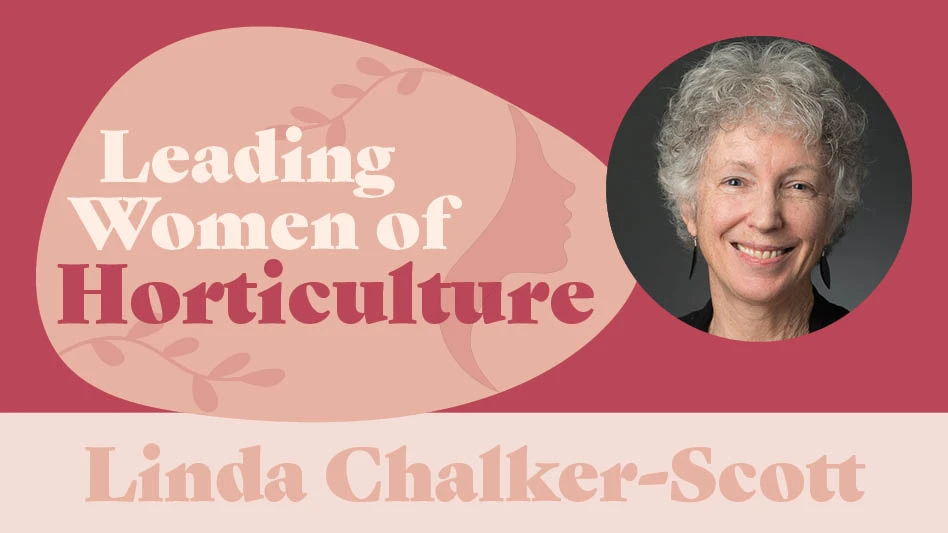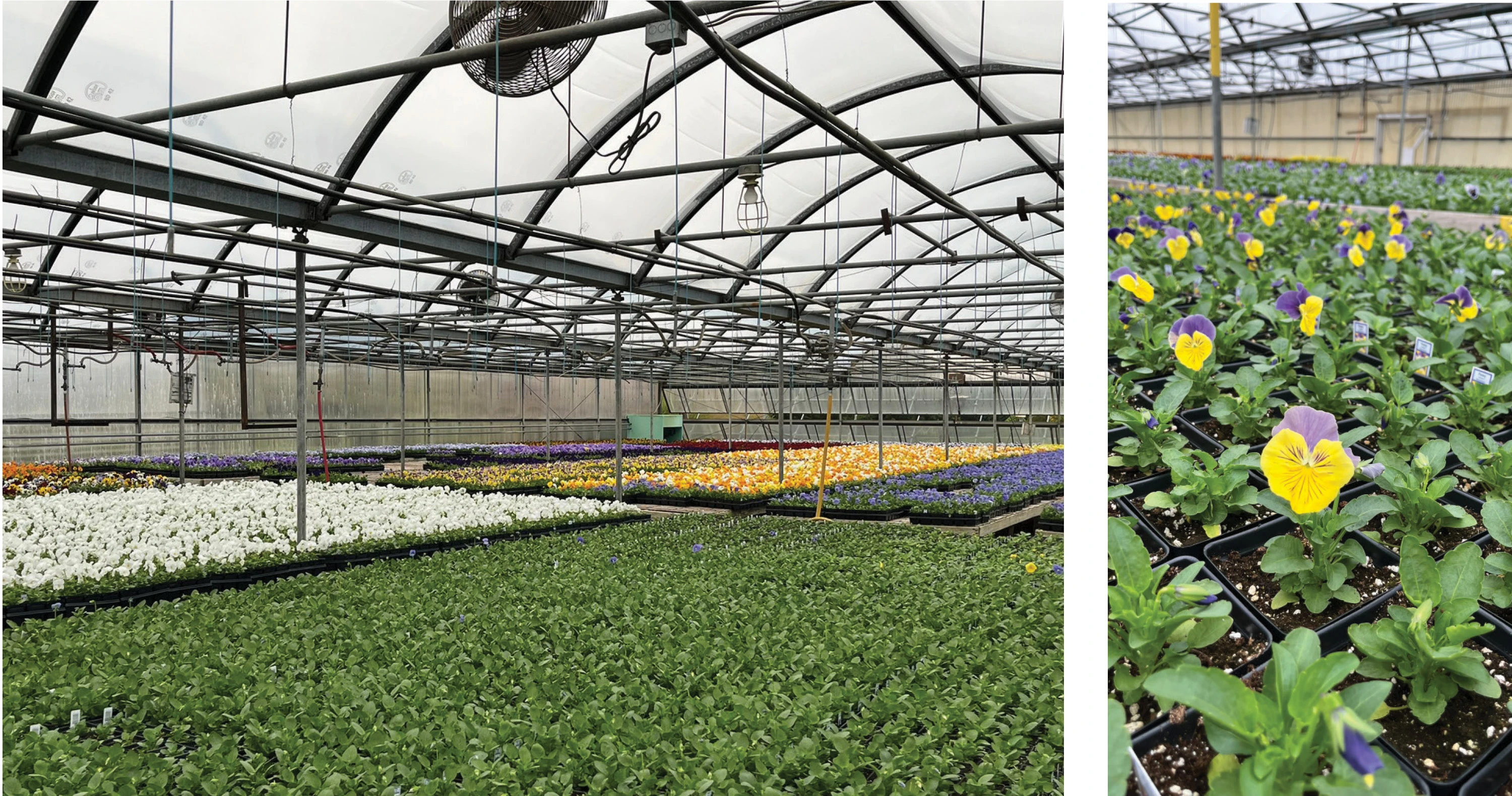Growing in Pennsylvania
By Matt McClellan
Plants are big business in Pennsylvania. According to the most recent study, it is a $6.8 billion industry, including growers, landscapers and garden centers. Nursery crops, floriculture crops and trees are listed as Pennsylvania’s biggest cash crop. However, those numbers are from a Texas A&M study based on the last census of agriculture, which occurred in 2007 – before the economy crashed.
The economy
Gregg Robertson, who handles government relations for the Pennsylvania Landscape and Nursery Association, says the overall economy remains a concern.
“Things are better than they were as we were coming out of the recession,” Robertson says. “But people are having to get as lean as they possibly can and look at all of their costs. If you take a look at all the growers that made it through the recession successfully, the growers that did that beforehand are the ones who didn’t get hurt as much by the downturn and are coming back strong.”
Most of the state’s growers are concentrated in the Eastern part of Pennsylvania. That region of the state is not recovering as quickly as the Western part of the state, which has successfully transitioned from old steel to biotechnology, health care and energy development. Western Pennsylvania’s economy has been particularly buoyed by the Marcellus shale development.
 Demand
Demand
Growers are seeing higher demand for their products, but it’s not how it used to be in the golden days before the recession. Robertson says growers are facing tremendous pressure on margins.
“Everybody has to have their pencils sharpened,” he says. “The one exception to that is in nurseries that have trees in the 2-3 inch caliper range. There is a continuing shortage there that we started to see last year. That is continuing because a lot of people didn’t have the capital during the recession to put trees in the ground. The demand for that type of tree is growing. If you’ve got trees in that range, you’re doing pretty well.”
There are a few Pennsylvania nurseries that were conservative with their spending early on, could see that this would happen, and are now in pretty decent shape because they have the stock for the market.
Pests and diseases
Boxwood blight is a big concern among Pennsylvania growers, for more than the usual reason. Under Pennsylvania waste disposal laws, you cannot put yard waste into a landfill. Typically, it goes to composting operations where it is recycled back into landscaping products. PLNA is working with Penn State University to find out if the pathogen can be killed by composting. If so, the question becomes what are the conditions of the composting that will neutralize the pathogen?
“We’re concerned that people will be pulling diseased boxwoods out of the landscape, placing them into the composting stream, then using that compost horticulturally in the landscape,” Robertson says. “It could be a vector to spreading the pathogen all over Pennsylvania.”
High tunnel tax battle
One of the biggest issues facing Pennsylvania growers in 2013 was the effort of some local governments to levy real estate taxes on high tunnels and hoop houses. These structures allowed nurseries, landscape contractors and garden centers to extend the growing season into the spring and fall, and to protect their plants from snow damage and temperature extremes during the winter. If high tunnels were to be taxed, it would have removed the economic benefits of these inexpensive structures. However, the state passed two bills in 2013 that exempt these structures from real estate taxes. There is still one bill dealing with the uniform construction code that is sitting in the state Senate. It clarify that agricultural buildings are not subject to UCC. That includes a more precise definition of agricultural structure that includes greenhouses, high tunnels, and hoop houses. It passed the house unanimously, but needs a vote in the full senate.
 Seeing the big picture
Seeing the big picture
Jake Pierson of Pierson Nurseries discusses the challenges of growing in Maine.
By Matt McClellan
Sometimes when you’re worried about whether you have enough 2-inch pear trees to sell to your customer, it’s easy to forget about the big picture. That’s why Jake Pierson tries not to sweat the small stuff.
“We have always felt it’s important to be involved in organizations and the big picture — not just the day to day, what you’ve got going on in your yard,” Pierson says. “It gives you an opportunity to put your company into a better position to succeed when you have a sense of what’s going on the industry as a whole as well as your neck of the woods.”
Jake Pierson is the nursery manager of Pierson Nurseries, a wholesale nursery selling a full line of field and container plants and specializing in native and wetland materials. He is also vice president of the Maine Landscape and Nursery Association (MELNA) and on the board of the New England Nursery Association.
Dale and Mike Pierson founded the nursery in 1973. Jake is a second-generation nurseryman who learned the importance of the big picture from his father, Dale, who has served on the board and as president of MELNA, NENA and New England Grows.
What’s growing?
Pierson says that in the Maine nursery market, most growers focus on evergreens. By growing evergreens, they not only have nursery stock, but also can add a Christmas tree business. This gives them a three season business instead of 1½ as a direct outgrowth of what they are already doing.
As for shade tree growers, most are mainly rewholesalers. Pierson Nurseries produces everything from its own perennials all the way up to large caliper shade trees and evergreens, sold to the horticulture trade. Native and wetland plants are now one third to one half of all plant sales Pierson produces 60 percent of what it sells.
“There are definitely a smaller percentage of people who do the full range of growing and reselling,” Pierson says. “A lot have moved to just reselling.
Issues
Freight is a major issue for Maine growers, as it is nationwide. It’s magnified for Maine because it is the end of the supply line. That makes it difficult to get finished or bareroot material.
“We are so much later than most of the country,” Pierson says. “That makes it more difficult for us to get the material when we can actually use it. If we want it dormant, we have to take it earlier from growers who are further south in a more temperate climate.”
Shortages of particular plant types, especially 2-3 inch caliper trees, have only exacerbated the problem.
 “When someone shows up cash in hand, asking for 500 of a plant, (people) are going to take the money and walk away instead of waiting for someone in Maine who is still under three feet of snow, Pierson says. “Everyone has tightened up, there are tighter inventory numbers across the board. That impacts everybody, and when you are the last person on the supply line, you don’t always get first choice of what gets shipped to you.”
“When someone shows up cash in hand, asking for 500 of a plant, (people) are going to take the money and walk away instead of waiting for someone in Maine who is still under three feet of snow, Pierson says. “Everyone has tightened up, there are tighter inventory numbers across the board. That impacts everybody, and when you are the last person on the supply line, you don’t always get first choice of what gets shipped to you.”
Another major issue is the weather and the changes to the USDA plant hardiness zone map. People in Maine have been hesitant to embrace the new zones, and this winter has done nothing to sway them. Maine is further north from the majority of suppliers and the plants they’ve been producing and developing have not been tested for harsh Maine winters. Pierson expects to see plenty of losses on plants that were pushing the envelope, and resurgence for the cold-hardy “old reliables.”
Soil is another issue for Maine growers. Maine soil needs to be amended more than the soil of nurseries in Ohio or Oregon, so proper crop rotation is necessary. Because of the shorter growing season, Maine growers should ensure their soil is at its best for their plant material on the field production side.
Surviving shortages
The northeast region has always had large market share, but the nurseries there rely heavily on the Southeast. Because of the shorter travel distance and quicker turnarounds, most people in the northeast pull a large percentage of their shade trees from the southeast, if they aren’t growing them themselves. Other reasons include good growing soil, lower labor and freight costs, cheaper pricing, and the ability to grow a wider range of material because they have a longer growing season, but they do have a winter to some degree.
In the Southeast, many farmers became nurserymen because there was money to be made on ornamentals.
“A lot of those guys who were farmers first and nurserymen second have switched back,” Pierson says. “The quantity of material that is available out of the southeast is much smaller. That will have an impact on the Northeast because we are one of the largest markets for plant material. We will have to find that material somewhere, whether it’s from another grower in another area or we grow it ourselves.”
Two years ago, Pierson increased its pricing about 5 percent across the board on all plant material. Pierson plans for that to happen again this year. He says that a lot of other growers he buys from have increased 5-7 percent as well.
“People have to understand that there is less supply,” Pierson says. “The demand is not back to where it was, but it is stronger than people expect.”
The nursery industry as a whole is slow to adapt, and slow to develop new products or ways of doing things.
“We’re not a widget industry,” Pierson says. “We don’t make a 3/8 widget, and when no one needs that size anymore, we can’t go out to the machine and switch the setting to 2/3. That’s not how our industry works and that’s hard for the end consumer to understand.
“They realize it when they think about it but they don’t think about it because they don’t ever see the production side of it. They just go to the garden center and see the blooming Endless Summer hydrangea and figure we can make that happen any day of the week. No, we can’t. It’s a good thing for our industry to have these shortages, stand, and say this is what we can do. Sorry. I think it gives us a little bit of power to say here’s what can do, here’s where we can meet in the middle.”
For more: www.piersonnurseries.com
 Maryland horticulture is worth more than $1 billion
Maryland horticulture is worth more than $1 billion
The latest economic impact report reveals woody plant sales at $357 million in 2012.
The Maryland horticulture industry is worth a lot of bank to the state, and the green industry has the numbers to back up the claim. The Maryland Nursery and Landscape Association, the University of Maryland and the Maryland Department of Agriculture collaborated on an economic impact study. The data, which represents 2012 sales, was released in January of this year.
The report reveals that gross receipts of horticultural sales were estimated at $1.19 billion in 2012. Those figures were expected to increase to $1.30 billion in 2013.
In 2012, the green industry was emerging from more than four years of deep and widespread recession. The horticulture industry was hit hard by a major slowdown in the housing industry, which is only starting to recover. The economy was identified as the number one factor limiting growth in this survey.
Reported sales from 2011 to 2012 showed a 4.8 percent drop in gross income, although the expected sales for 2013 indicate an 8.6 percent increase over 2012 numbers. From 2011 to 2012, retailers showed the highest drop in gross income (-15.4 percent), while growers showed a modest increase (+2.8 percent).
Important highlights from the 2012 survey include:
- Growers sales (both wholesale and retail) accounted for 29 percent
- Landscape Installation and Maintenance accounted for 46 percent of sales
- Retail sales accounted for 25 percent of sales
Maryland growers (wholesale and retail) generated $773 million in sales
- Woody plants 45.7 percent - $357 million, more than twice the sales of annuals
- Annuals 22.8 percent - $178 million
- Herbaceous perennials 22 percent - $171 million
- Specialty greenhouse products 5.5 percent - $43 million
- Christmas trees 0.7 percent - $6 million
The industry employed 25,605 people
- 60 percent were employed full time (more than 150 days per year)
- Average wage rate for both experienced and non-experienced laborers was $10.80/hr – which is above the federal minimum wage
“I think the survey certainly shows the effect of the recession on the industry,” says Vanessa Finney, executive director of the MNLA. “Compared with past surveys, the segments of the industry, as a share of the whole, have basically proportionately remained the same. This speaks to the overall strength of the industry segments as all remaining viable partners in the whole picture of Maryland horticulture.”
Products and services
Total gross receipts for Maryland licensed horticultural operations were $1.193 billion in 2012. Landscaper sales accounted for 46 percent of the total receipts with sales surpassing $546 million. The total gross sales decreased by 39 percent, compared to the 2007 survey results. The 2012 survey saw a 9 percent decrease in the number of licensed nursery operations in business compared to 2007. Overall, licensed nursery operations in Maryland reported they expect an 8 percent increase in total sales in 2013.
Method for plants sold
Of the total 2012 plant-related sales reported by licensed horticulture operations, 71 percent or $550 million were for container-grown products (including all types of greenhouse production). Sales of field-grown products totaled $216 million or 28 percent of total sales. Cut flower and other products made up a very small percentage of the total sales with 0.5 percent and 0.4 percent, respectively.
Source of plants sold
The 2012 survey identified some significant changes in the quantities of plant material sold. In 2007, it was reported that 8 percent of plants were imported unfinished from other states, and 10 percent were imported finished. In 2012, 12 percent were imported unfinished, and 31 percent were imported finished. Likewise, there were reductions in 2012 of unfinished plants from another nursery in Maryland 4 percent vs. 11 percent in 2007, and finished plants from a grower in Maryland, 16 percent in 2012 vs. 37 percent in 2007.
About 35 percent of the Maryland nursery crop is grown from start to finish and sold directly from the farm, similar to the 33 percent reported for 2007. Small amounts of plant material (≈ 1 percent) were imported from outside the United States or of unknown origin.

Explore the March 2014 Issue
Check out more from this issue and find your next story to read.
Latest from Nursery Management
- John Ruter shares UGA's latest woody and herbaceous ornamental plant breeding projects
- Conor Foy joins EHR's national sales team
- Pantone announces its 2026 Color of the Year
- Syngenta granted federal registration for Trefinti nematicide/fungicide in ornamental market
- Get to know Kayela Aeppli
- HILA 2025 video highlights: John Gaydos of Proven Winners
- Q&A with Justin Bartlett
- Be the best choice





